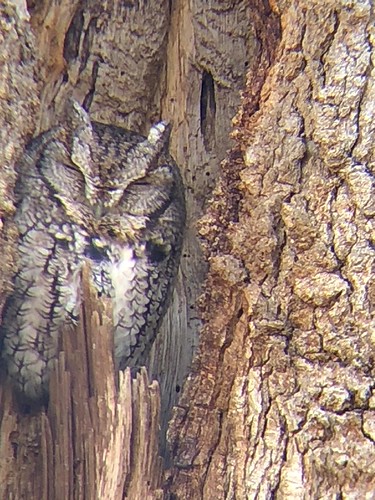Read Our Blogs
Exploring the Winter Wildlife
Shared by Monica Hoel, as Guest Blogger.
While exploring Yellowstone, we laughed at reports of complaint letters from visitors who griped to park staff about seeing no bears. “We drove all the way to Yellowstone and didn’t see any bears. Unacceptable!”
Animals are pretty smart about staying out of sight, and that’s good for their safety, but spotting a little wildlife can be fun. Even if you don’t see a critter, you might be surprised at how many clues they leave about their presence. It’s a little like a code that has to be cracked.

Holes
One of the most interesting facts about animal signs I ever learned I learned at Hungry Mother State Park on an interpretive hike. It was very cold, and the ranger showed us a chipmunk hole in with a ring of frost around the hole: the moisture from the chipmunk’s breath was freezing around the hole. You might also find telltale holes in trees: pileated woodpeckers make oblong holes and yellow-bellied sapsuckers make small holes in straight lines that encircle the tree trunk. Keep your eye on open cavities in a tree, and you might find eyes that are looking back at you since owls find those to be a perfect resting spot. Skunks create shallow holes all around that look like small indentations in mulch and dirt where they forage overnight, and groundhogs create large holes to allow for covert traveling.

Rustles
I nearly stepped on a garter snake sunning himself on the trail recently and frankly would never have seen him if he hadn’t slipped into a pile of dry leaves. He was stealthy but couldn’t avoid making a little noise. Fall is a great time to notice animals because it’s hard to sneak around with all those crunchy leaves. Keep an ear out for birds scratching around for insects or small mammals getting out of your way, like a vole moving through its tunnels in the grass.
Footprints and Scat
It may not help you see the animal, but by getting familiar with paw prints and poop types, you can have a good idea of which animals have traveled around your home or preceded you on the trail. Who knew that each animal has slightly different shaped poop? These small signs will tell you a lot about the animal, and you get to tell people you really know your scat.

Rubbings
 Deer like to hone their antlers on tree trunks. Watch for patches of bark that have been worn away, and you might have a spot where deer like to be. Or look up, slightly above your head, and you might see what appear to be scratch marks on a tree. This is a sign that bears have been around and are marking their territory or trying to get under the bark to feed on ants and grubs. Nests with the leaves off the trees, we can get a clear look at how many bird and squirrel nests are unseen all around us during the busy mating seasons of spring and summer. It’s a great reminder to put aside some of our trimmings and mowing to give room for our wilder friends to have some additional natural habitat.
Deer like to hone their antlers on tree trunks. Watch for patches of bark that have been worn away, and you might have a spot where deer like to be. Or look up, slightly above your head, and you might see what appear to be scratch marks on a tree. This is a sign that bears have been around and are marking their territory or trying to get under the bark to feed on ants and grubs. Nests with the leaves off the trees, we can get a clear look at how many bird and squirrel nests are unseen all around us during the busy mating seasons of spring and summer. It’s a great reminder to put aside some of our trimmings and mowing to give room for our wilder friends to have some additional natural habitat.
Fast-food Containers
Unfortunately, the most obvious animal signs we’re likely to notice are from homo sapiens, aka humans. Every venture outdoors reveals Styrofoam cups, straws, bait containers, and plastic bottles. Wild animals have the right idea when it comes to leaving only gentle, subtle impacts that are difficult even to notice. We could probably take a lesson from those cagey little critters.
For more information on how you can be subtle like our wildlife, click here.
If you have read the article and have a question, please email nancy.heltman@dcr.virginia.gov.














